7 Easy Art Therapy Exercises for Beginners
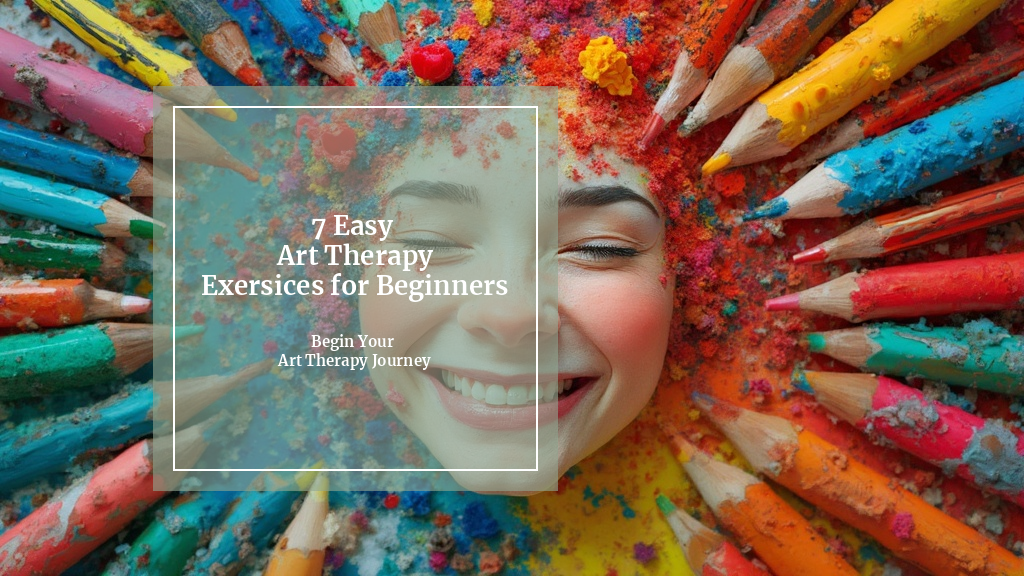
Table of Contents
Introduction to Art Therapy
Art therapy is a powerful tool for emotional healing and self-discovery that combines the creative process with psychological theory. It offers a unique way to express feelings, reduce stress, and gain self-awareness through various artistic mediums. Whether you’re dealing with anxiety, depression, or simply looking to explore your inner world, art therapy can provide a safe and nurturing space for personal growth.
In this blog post, we’ll explore seven easy art therapy exercises designed for beginners. These activities are not only accessible but also highly effective in promoting emotional well-being and fostering creativity. As you embark on this journey, remember that art therapy is about the process, not the final product. There’s no need to be an accomplished artist to benefit from these exercises.
For those interested in delving deeper into the field of art therapy, consider exploring the Art Therapy Practitioner course. This comprehensive program can provide you with the skills and knowledge to facilitate art therapy sessions and help others on their healing journey.
Now, let’s dive into these simple yet powerful art therapy exercises that can help unlock your creativity and promote emotional healing.
1. Mandala Drawing
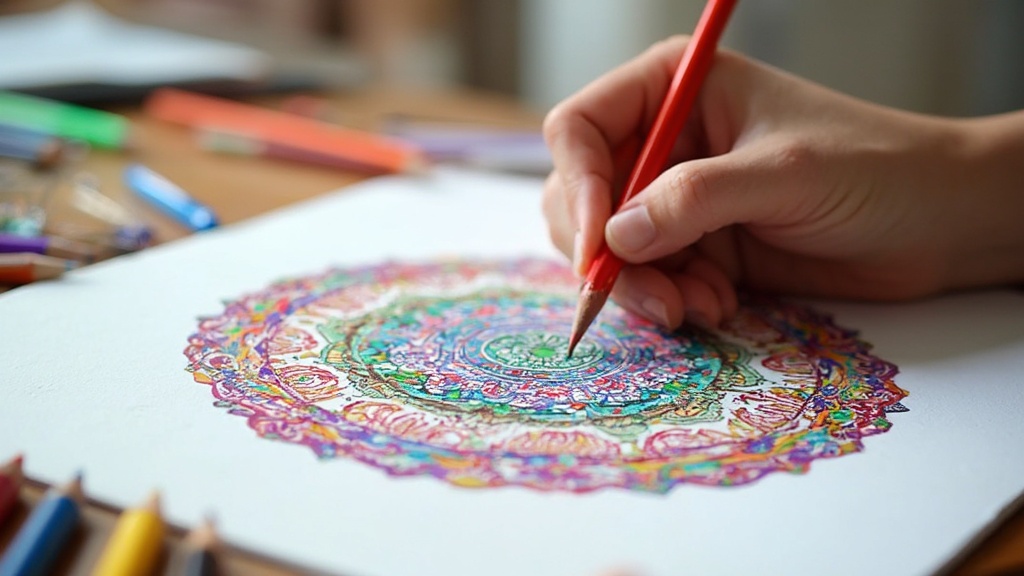
Time Required: 30-60 minutes
Materials Needed: Paper, pencil, colored pencils or markers, compass (optional)
Mandala drawing is a meditative and calming art therapy exercise that can help reduce anxiety and improve focus. The word “mandala” comes from Sanskrit, meaning “circle,” and these symmetrical designs have been used for centuries in various spiritual traditions.
To begin, draw a circle on your paper. You can use a compass for precision or freehand it for a more organic feel. Start from the center and work your way outwards, adding patterns, shapes, and colors as you go. Let your intuition guide you in choosing colors and designs. There’s no right or wrong way to create a mandala – it’s all about expressing your inner state through visual elements.
As you draw, focus on your breath and allow your mind to quiet. This exercise can be particularly helpful for those dealing with anxiety or stress, as it promotes mindfulness and relaxation. The repetitive nature of creating patterns can induce a meditative state, helping to calm racing thoughts and center your mind.
Benefits:
- Reduces anxiety and stress
- Improves focus and concentration
- Promotes mindfulness and relaxation
- Enhances self-awareness
For more insights on how art therapy can help with anxiety, check out this comprehensive guide on art therapy activities for anxiety relief. Additionally, if you’re interested in exploring how art therapy can benefit sleep patterns, you might find our ultimate guide to art therapy for sleep helpful.
2. Emotion Color Wheel
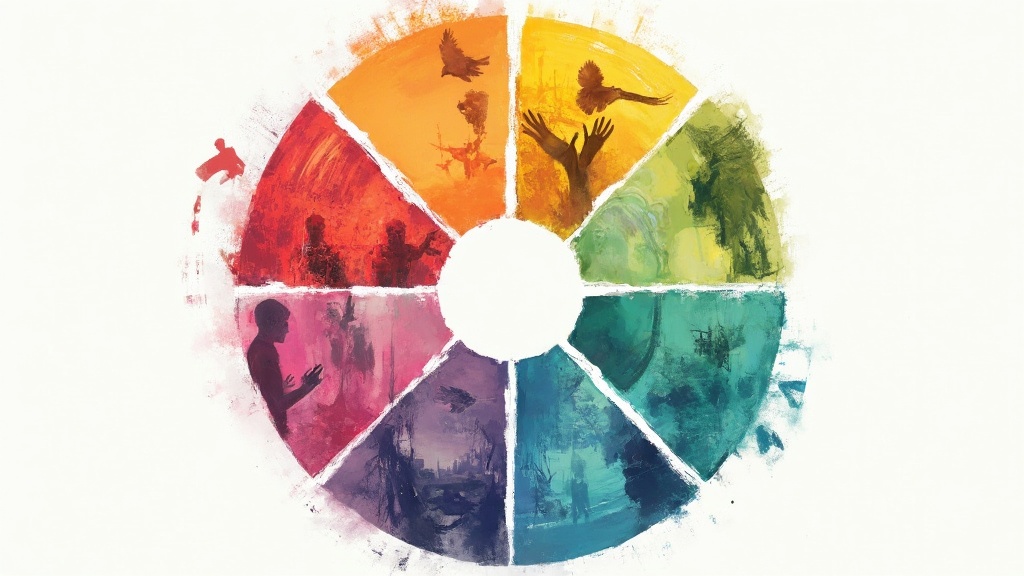
Time Required: 20-40 minutes
Materials Needed: Paper, colored pencils, markers, or paint
The Emotion Color Wheel is a creative exercise that helps individuals explore and express their emotions through color. This activity can be particularly beneficial for those who struggle to verbalize their feelings or for anyone looking to gain deeper insight into their emotional state.
To create your Emotion Color Wheel:
- Draw a large circle on your paper and divide it into 6-8 sections, like slices of a pie.
- Think about different emotions you experience regularly (e.g., joy, anger, sadness, fear, excitement).
- Assign a color to each emotion based on your intuition. There’s no right or wrong choice – it’s about what feels right to you.
- Fill each section of the wheel with the color you’ve associated with that emotion.
- Label each section with the corresponding emotion.
Once you’ve completed your wheel, take some time to reflect on your color choices. Are there any surprises? Do certain colors dominate the wheel? This exercise can provide valuable insights into your emotional landscape and help you develop a personal “emotional vocabulary” through color.
Benefits:
- Enhances emotional awareness and expression
- Provides a visual tool for understanding and communicating emotions
- Encourages self-reflection and introspection
- Can be used as a quick emotional check-in tool in daily life
For those interested in exploring more about how art can be used to express emotions, our article on how to express your emotions through art offers additional insights and techniques.
3. Collage Making
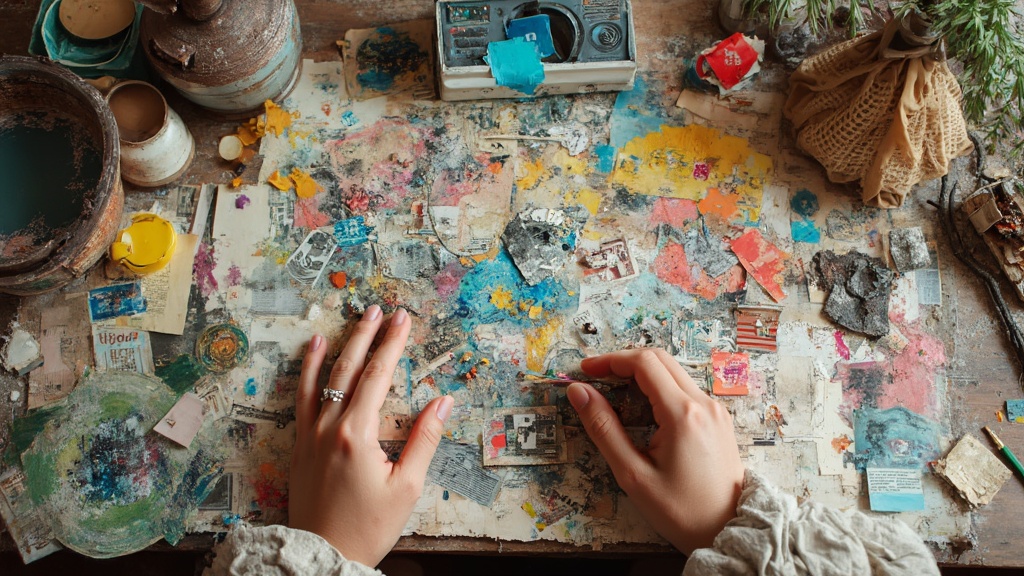
Time Required: 45-90 minutes
Materials Needed: Magazines, newspapers, photographs, scissors, glue, large paper or cardboard
Collage making is a versatile and accessible art therapy technique that allows for creative expression without the pressure of drawing or painting skills. This exercise is particularly effective for exploring personal narratives, goals, or emotions in a tangible, visual way.
To begin your collage:
- Choose a theme or intention for your collage. It could be about your current emotional state, future aspirations, or a specific issue you’re working through.
- Browse through magazines and other materials, cutting out images, words, and textures that resonate with your theme.
- Arrange the cut-outs on your paper or cardboard. Don’t glue them down immediately – play with different arrangements.
- Once you’re satisfied with the layout, glue the pieces in place.
- Reflect on your finished collage. What story does it tell? What emotions does it evoke?
Collage making can be a powerful tool for self-discovery and emotional processing. The act of selecting and arranging images can reveal subconscious thoughts and feelings, providing valuable insights into your inner world.
Benefits:
- Facilitates self-expression and creativity
- Helps in visualizing goals and aspirations
- Promotes self-reflection and introspection
- Can be used to explore complex emotions or experiences
For those interested in exploring more art therapy activities, especially for addressing depression, our guide on art therapy activities for depression offers valuable insights and techniques.
4. Clay Sculpting
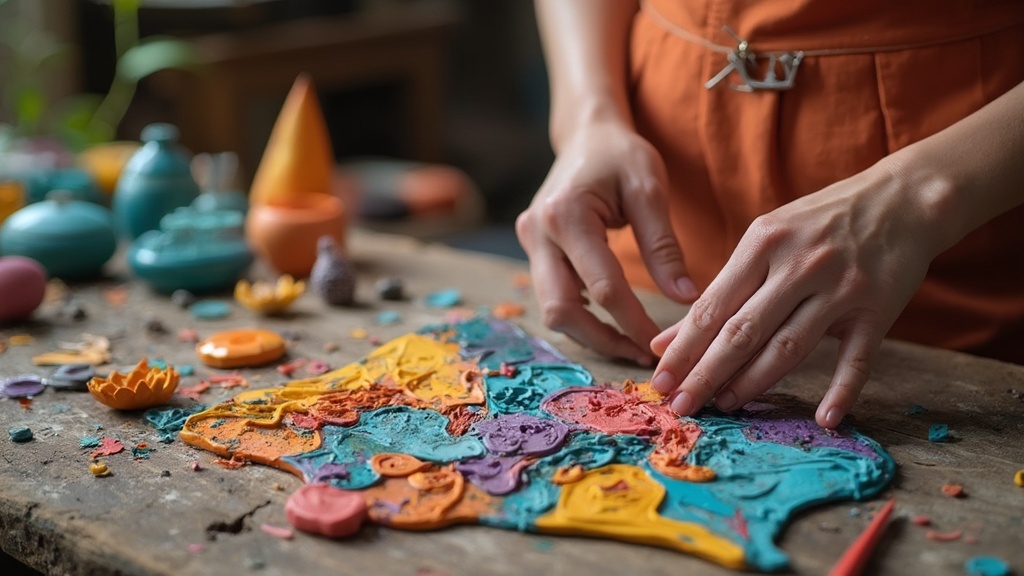
Time Required: 30-60 minutes
Materials Needed: Clay (air-dry or polymer), sculpting tools (optional), work surface
Clay sculpting is a tactile and grounding art therapy exercise that engages multiple senses. The physical act of molding and shaping clay can be both calming and cathartic, making it an excellent tool for stress relief and emotional expression.
To begin your clay sculpting session:
- Start by warming up the clay in your hands, feeling its texture and temperature.
- Close your eyes and focus on your current emotional state or a specific issue you’re working through.
- Begin to shape the clay, letting your hands move intuitively. Don’t worry about creating a specific form – focus on the process.
- As you sculpt, pay attention to the sensations in your hands and any emotions that arise.
- When you feel finished, open your eyes and observe your creation. What does it represent to you?
Clay sculpting can be particularly beneficial for individuals who struggle with verbal expression or those who carry tension in their bodies. The physical manipulation of clay can serve as a metaphor for shaping and transforming emotions or experiences.
Benefits:
- Provides a tactile outlet for emotional expression
- Reduces stress and anxiety through sensory engagement
- Improves fine motor skills and hand-eye coordination
- Encourages mindfulness and present-moment awareness
For those interested in exploring more creative ways to use art therapy, especially with adults, our article on 10 creative ways to use art therapy with adults offers additional techniques and insights.
5. Expressive Painting
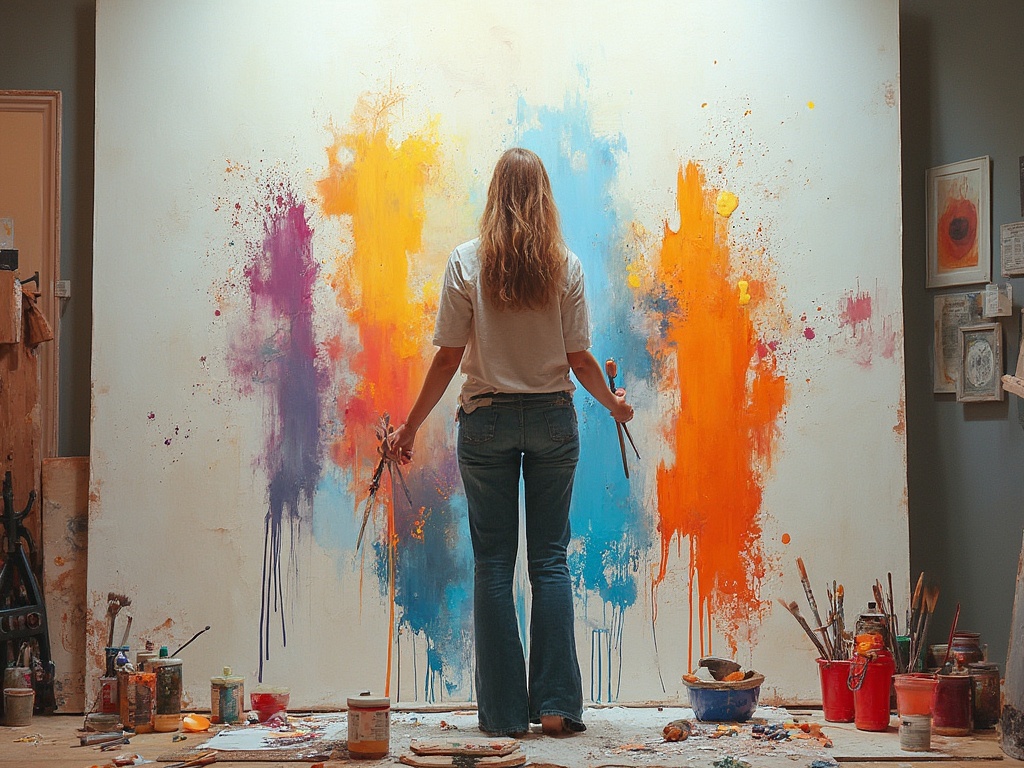
Time Required: 30-60 minutes
Materials Needed: Large paper or canvas, acrylic or watercolor paints, brushes, water container, palette
Expressive painting is a liberating art therapy exercise that encourages spontaneous, free-form creativity. This technique allows individuals to bypass their inner critic and connect directly with their emotions through color, movement, and texture.
To engage in expressive painting:
- Set up your painting area with all materials easily accessible.
- Take a few deep breaths to center yourself and connect with your current emotional state.
- Choose colors intuitively, based on how you feel rather than what you think “looks good.”
- Begin painting without a specific plan or image in mind. Let your brush (or hands) move freely across the canvas.
- Focus on the process rather than the end result. Experiment with different brush strokes, textures, and color combinations.
- Continue painting until you feel a sense of completion or release.
Expressive painting can be particularly beneficial for individuals dealing with stress, anxiety, or repressed emotions. The act of freely applying paint to a surface can serve as a powerful outlet for pent-up feelings and can lead to emotional catharsis.
Benefits:
- Promotes emotional release and stress reduction
- Enhances self-expression and creativity
- Improves mood and reduces symptoms of anxiety and depression
- Encourages mindfulness and present-moment awareness
For more information on how expressive arts therapy can be used for self-discovery and personal growth, check out this comprehensive guide on expressive arts therapy.
6. Art Journaling
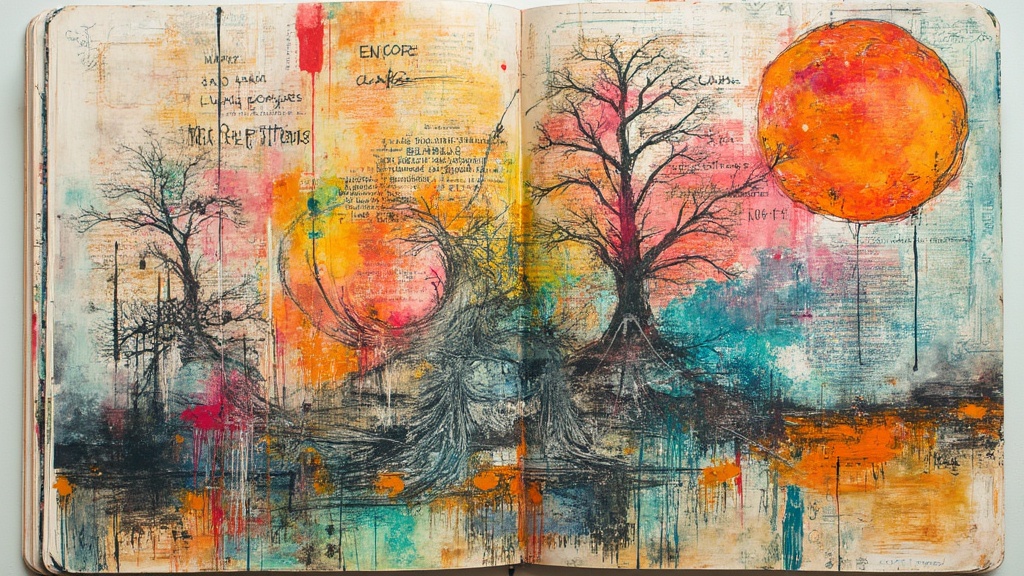
Time Required: 15-30 minutes daily or as needed
Materials Needed: Journal or sketchbook, various art supplies (pens, markers, colored pencils, watercolors, glue, scissors, magazine clippings)
Art journaling is a versatile and ongoing art therapy practice that combines visual art-making with reflective writing. This technique allows individuals to document their thoughts, feelings, and experiences in a creative and personalized way.
To start your art journaling practice:
- Choose a journal or sketchbook that feels comfortable and inspiring to you.
- Set aside regular time for journaling, even if it’s just a few minutes each day.
- Begin each session by reflecting on your current emotional state or a significant event from your day.
- Use a combination of words and images to express yourself. This could include drawing, painting, collage, or any other artistic technique that appeals to you.
- Don’t worry about creating “perfect” art – focus on authentic expression.
- Review your journalentries periodically to reflect on your emotional journey and personal growth.
Art journaling can be particularly beneficial for individuals looking to develop a consistent self-reflection practice or those who enjoy combining visual and written expression. It serves as a safe space to explore emotions, process experiences, and track personal growth over time.
Benefits:
- Provides a regular outlet for self-expression and emotional processing
- Enhances self-awareness and personal growth
- Serves as a record of your emotional journey and life experiences
- Combines the benefits of both visual art-making and reflective writing
For those interested in exploring how art therapy can be used to empower individuals, our article on fun and empowerment through art therapy offers additional insights and techniques.
7. Body Mapping
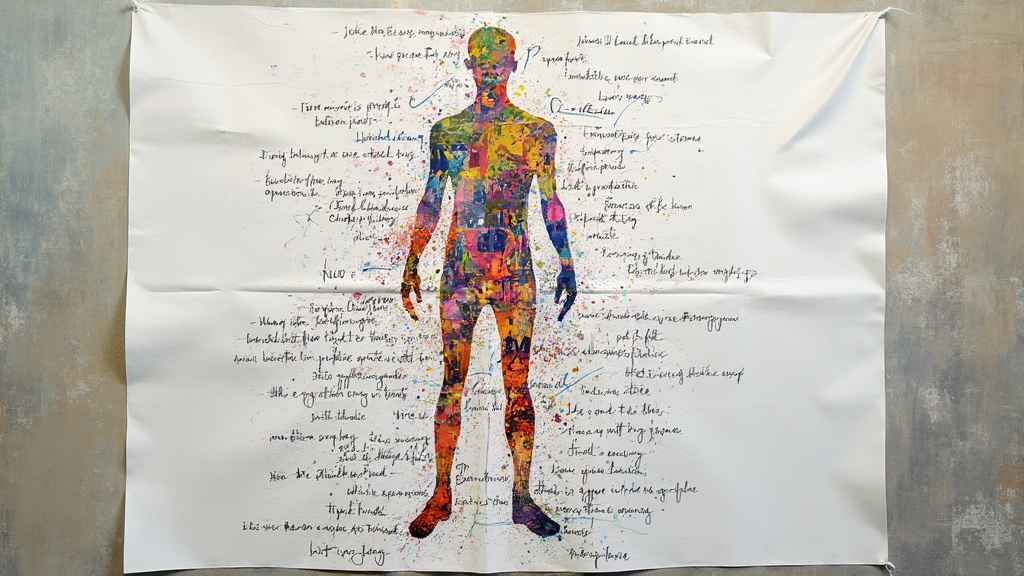
Time Required: 60-90 minutes
Materials Needed: Large paper (big enough to trace your body), various art supplies (markers, paints, colored pencils), magazines for collage (optional)
Body mapping is a powerful art therapy technique that allows individuals to explore their relationship with their body, emotions, and life experiences. This exercise can be particularly beneficial for those dealing with body image issues, trauma, or chronic illness.
To create your body map:
- Lay out a large piece of paper on the floor.
- Have a partner trace the outline of your body on the paper, or draw a simple body outline yourself.
- Reflect on your physical and emotional experiences. Where do you feel certain emotions in your body? Where have you experienced pain or joy?
- Use colors, symbols, words, and images to represent these experiences on your body map.
- Take your time with this process, allowing yourself to explore and express freely.
- When finished, step back and observe your body map. What insights does it provide about your relationship with your body and emotions?
Body mapping can be a transformative experience, offering a unique way to visualize and externalize internal experiences. It can help individuals develop a more compassionate and understanding relationship with their bodies.
Benefits:
- Enhances body awareness and promotes a positive body image
- Aids in processing trauma or difficult emotions
- Provides a visual representation of one’s emotional and physical experiences
- Encourages self-reflection and personal insight
For a real-world example of how body mapping can be used in eating disorder treatment, consider the case study from The Renfrew Center of New York City. In this case, a client named Sarah used body mapping as part of her recovery from anorexia nervosa. The exercise helped her externalize her inner struggles, challenge negative self-perceptions, and develop a more positive relationship with her body. You can learn more about their creative arts therapy programs here.
Conclusion
Art therapy offers a unique and powerful approach to emotional healing and self-discovery. The seven exercises we’ve explored – mandala drawing, emotion color wheel, collage making, clay sculpting, expressive painting, art journaling, and body mapping – provide accessible entry points for beginners to experience the benefits of art therapy.
Remember, the goal of these exercises is not to create masterpieces, but to engage in a process of self-expression and exploration. Each activity offers its own set of benefits, from stress reduction and anxiety relief to enhanced self-awareness and emotional processing.
As you incorporate these exercises into your life, you may find yourself drawn to particular techniques or wanting to explore art therapy further. For those interested in deepening their understanding or potentially pursuing a career in this field, consider exploring the Art Therapy Practitioner course. This comprehensive program can provide you with the skills and knowledge to facilitate art therapy sessions and help others on their healing journey.
Whether you’re dealing with specific mental health challenges or simply looking to enhance your emotional well-being, these art therapy exercises offer a creative and engaging way to connect with yourself and process your experiences. Remember, healing and growth are ongoing processes, and incorporating creative practices into your routine can provide valuable support along the way.

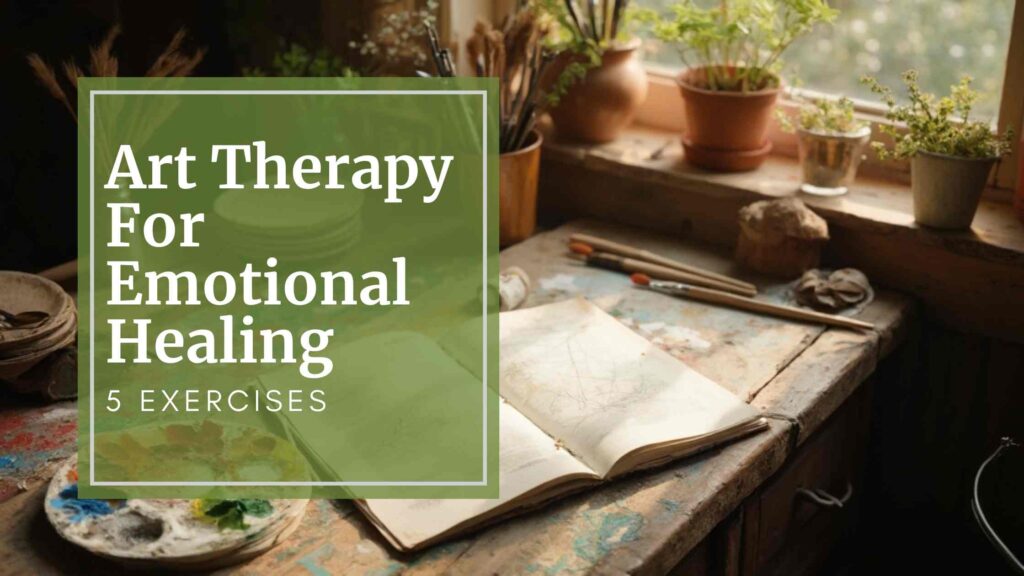
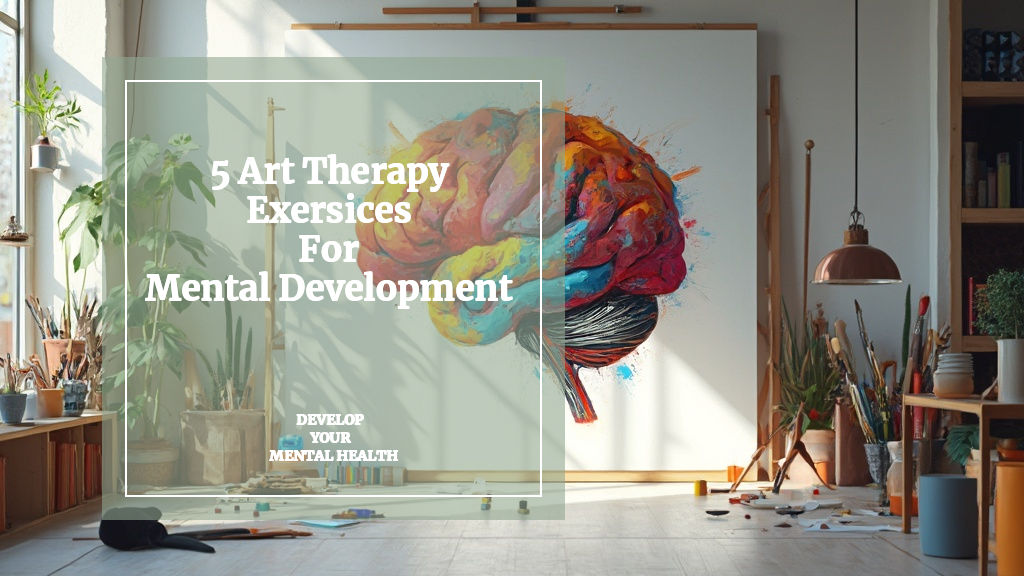
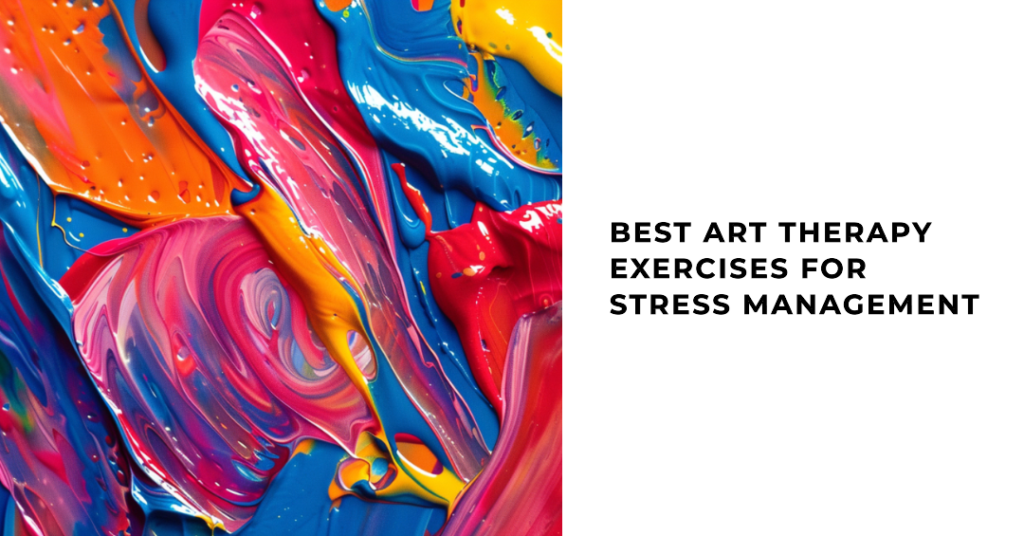
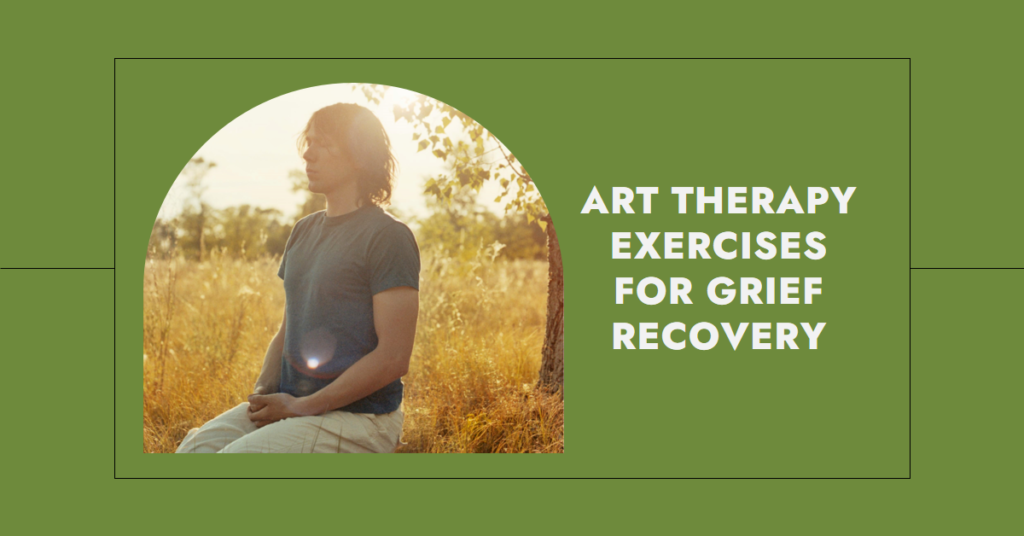
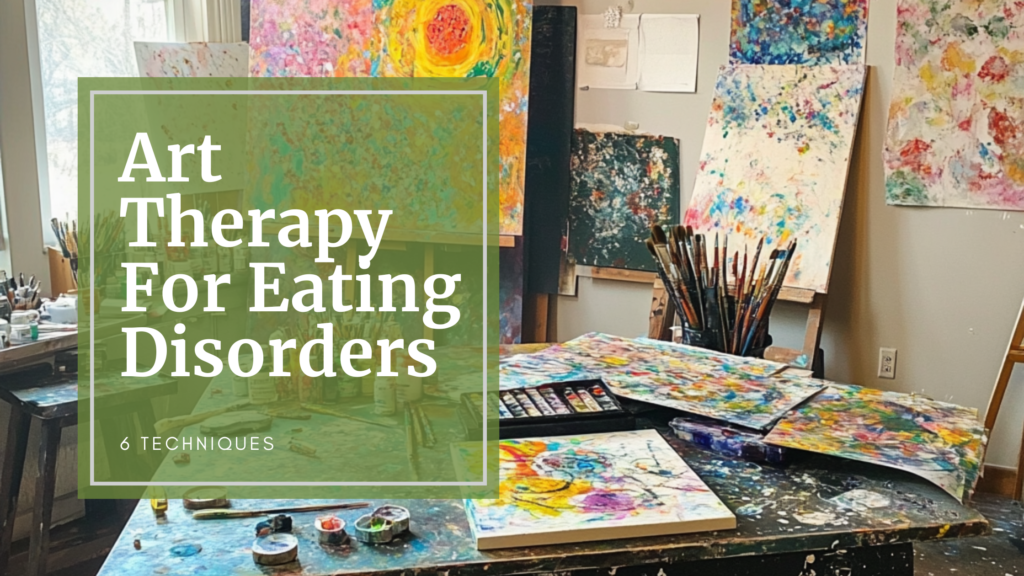


Responses